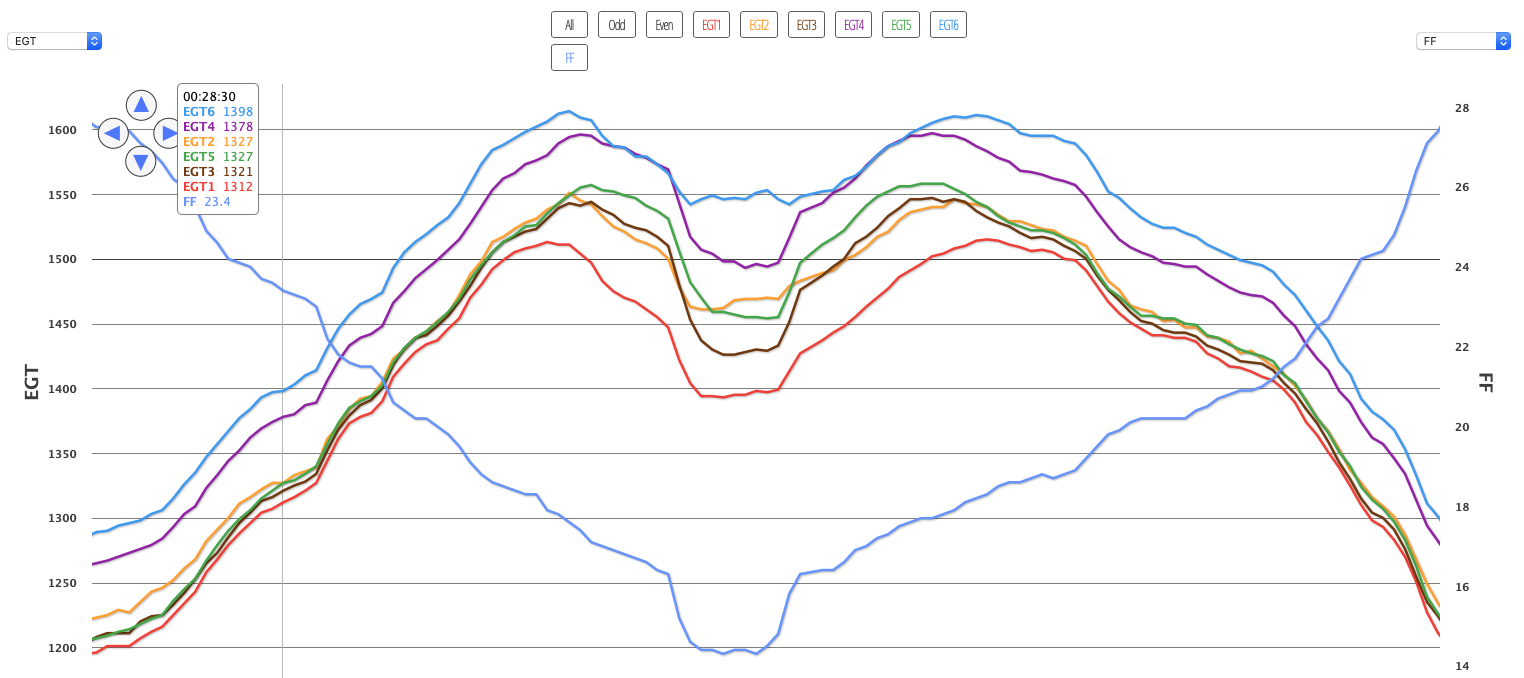Last month I said I would write about this so let’s end the suspense. I’ve been saving data for well over a year. I noticed this pattern before that, but started saving examples in mid 2018. So what is it?

In the spirit of good Puzzling, I’ll provide three examples and you can take a stab at the common pattern. These are all screenshots using our Gami tool. Here’s example 1…
Example 2…

Example 3…

If you guessed it has to do with mixture distribution, you’re right – although the Gami tool was a pretty good hint in that direction. But what is it about the distribution? These are all from Cirrus SR22’s with Continental IO-550-N engines.
Figure it out ? Give up ? In further keeping with the spirit of Puzzling, here’s a graphic display of the answer.

Enough suspense. On these sweeps, and dozens more like them, cylinders 1, 2 and 6 peak earlier than 3, 4 and 5. Sometimes the order is 6-1-2, sometimes 1-6-2 – I’ve seen every combination – but it’s almost always those three in some order. Almost ? Yeah, once in a while I get an SR22 that defies this pattern – maybe 10% of the sweeps I look at. If you were betting you’d go with 1-2-6 in some order. Why ?
I had a theory that if injectors were going to get dirty it would be the back ones, because they get the accumulated dirt from the whole engine compartment. By the way, Lycoming owners, 1 and 2 are aft on a Continental. But that doesn’t explain 6. My theory for that was that 6 was on the upswing of the prop so it was more exposed to dirt from the ground than 5 on the other side of the case. It’s a weak theory but all I could come up with.
We like to see a spread of around 0.5 GPH to support running LOP in cruise, although some clients do just fine in cruise with 0.7 or .0.8. If the airplane is due for service our protocol is to recommend cleaning the lean ones if the spread is 0.6 or higher. More often than not, a set of sweeps that posts 1-2-6 in some order will emerge from cleaning with the same rank. So even my weak theory isn’t much good.
For a while I thought it was limited to 22s and 550s, then I noticed it on the occasional SR20 with the IO-360. Here’s an example of that…

On this set of sweeps, 1 is out in front and is first to flame out as FF gets down to 7 GPH. 6 is not far behind and 2 is starting to drop on the second rich to lean sweep. I guess my “ones in the back” and the prop upswing theory doesn’t work any worse for 1-2-6 on the smaller airframe and engine.
What about the TSIO-550-K in the SR22T or the IO-550-TN with the Tornado Alley turbo ? Those spreads and ranks appear to be normally occurring – I have not seen any similar or recurring pattern in the turbo powered 550s, which use a different type of injector.
I have on my to-do list a research project to run peak rank numbers – iow, first to peak, then next to peak, etc – for each airframe/engine cohort to see if there’s a similar pattern hiding in the data for 36 Bonanzas or the PA-32 series or some other cohort. Of course we’ll have to filter out the spreads where one or more injectors were dirty, and GAMIs or position-tuned injectors will have to be handled separately – so there’s some crunching to do. Not that it’ll make anybody’s engine run smoother, but it would be nice to know if somebody’s pattern deviates from the norm for that cohort or configuration.